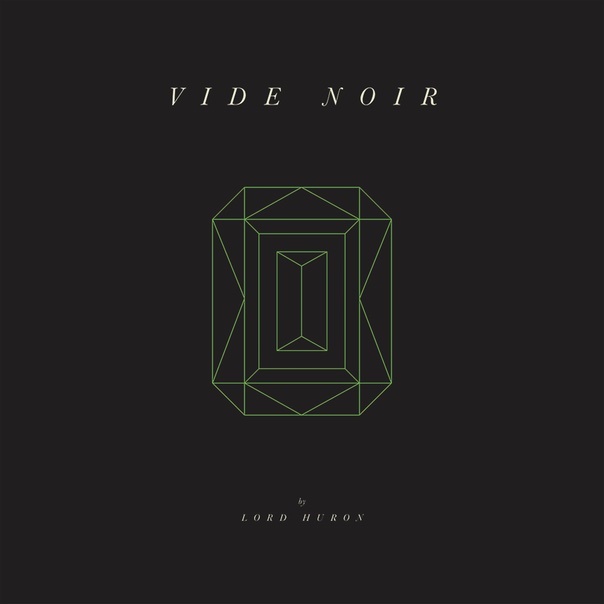ALBUM REVIEW: Lord Huron imagines expressive folk with ‘Vide Noir’

“Vide Noir” by Lord Huron.
With the extraordinary worldwide popularity of indie folk band Lord Huron’s last album, Strange Trails, Ben Schneider and company have set a high bar for themselves. We have all heard and reheard “The Night We Met” since it was made famous by a feature in the hit Netflix show 13 Reasons Why, but Lord Huron’s abilities stretch so much further than that one sample. With the release of its new album, Lord Huron sets out to demonstrate its full arsenal. Vide Noir comes full of complementary lyrics and musical stylings that shouldn’t work together but they do, proving itself as a worthy followup by combining pensive tranquility with meaningful angst.
Vide Noir
Lord Huron
April 20
Vide Noir starts in a calm place and builds from there. Opener “Lost in Time and Space” begins with a harp-heavy serenade to which one could easily meditate. An acoustic guitar appears shortly after as the song begins to take shape. The song’s rhythm and guitar chord progression stay consistent as Schneider’s vocals tell the story of a man aimlessly searching for love. It’s a recurring theme. The song winds down with the lyrics, “I don’t know who I am, I don’t know where I am,” repeating calmly as the harp riff returns to conclude the song to an angelic end.
Although the album starts off on a somber note, the next song, “Never Ever” is much more upbeat and showcases the band’s willingness to go outside of its comfort zone. This song is not unlike something The Killers would have released during their Hot Fuss and Sam’s Town eras. High energy, full of angst and with a propulsive bass line, this is by far the most upbeat song on the album.
It’s an upbeat song that delivers a sad message about a man waking up to find the woman he had gone to bed with missing, the subsequent journey of searching for her in vain, and the internal struggle of wondering if she was all he had built up in his. head. Still, it’s less depressing than the preceding “Lost in Time and Space.” It is a relatable and sobering message of balancing one’s hopes with reality. “Never Ever” ends with Schneider rhythmically repeating his lyric, “I will wake her in the morning.” Lord Huron provides his familiar feel despite but in contrasting style.
Further into the album, one can’t help but notice a reoccurring motif of escape. “I won’t believe in death ‘til I die. … I am only a nameless soul, heading into a pure black void,” Schneider sings of a man desperate to push his problems down as best he can—reminiscent of the same angsty style of songwriting that was popular in late ’90s emo.
The title track is where these types of lyrics are most dominant. The lyrics are certainly depressing, but not so much as to take away from the experience of listening to the song. Schneider uses short stanzas, almost all of which ending with the words “pure black void,” between instrumental passages. This arrangement draws parallels between indie folk and 12-bar blues, while upbeat instrumentals impart energy to the delivery. A simple bass riff is played consistently throughout, anchoring the song in a repetitive but not mundane arrangement.
The album comes to an end with “Emerald Star,” a stripped-down eerie lo-fi waltz. Record crackling is heard in the background, adding a hauntingly beautiful layer to the piece. A second set of strings soon enters the mix, followed by a steady drumbeat as the guitar steadily gains intensity steadily with each instrument added. A soft instrumental melody takes the wheel and gingerly drives this album home to an abstract finish.
The juxtaposition of this song’s lyrics and its composition is a fitting example of how Vide Noir makes its contrasting styles work. “I came all the way through time and space to take you out of this place,” Schneider sings. This might resonate as a victorious message, if not for the track’s overarching melancholy. This encapsulates the album perfectly. Vide Noir‘s paradoxical introspection begs to be pondered long after it ends, instilling a strong urge to return to track one again when the last song fades out.
Follow writer Nick Gumas at Twitter.com/NickGGumas.
